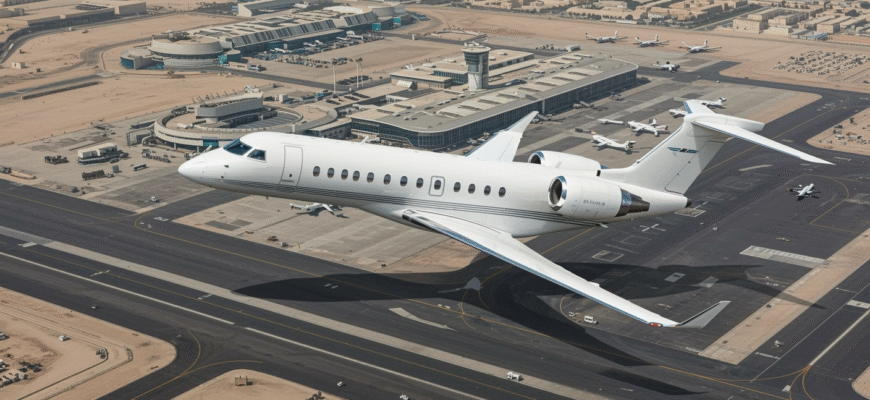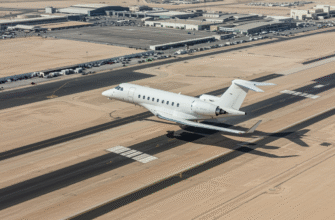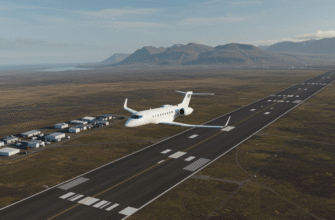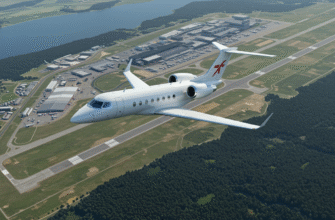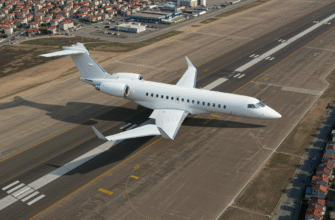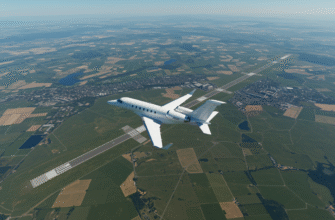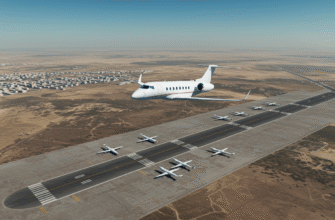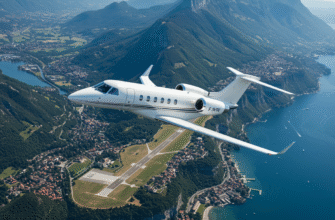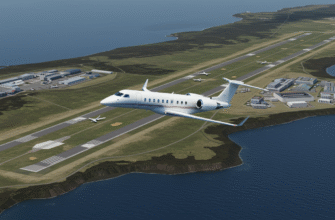What if the airport you landed in wasn’t just a stopover but the center of an entire city? Not a metaphor—an actual place with houses, schools, offices, parks, and five runways that look like they could launch spacecraft. That’s what Dubai is building in the middle of the desert with Al Maktoum International Airport, also known as Dubai World Central (DWC). Far beyond standard airport upgrades, DWC is the mega-move that could turn Dubai into the undisputed global hub of air travel. The blueprint? Process up to 260 million passengers a year over 140 square kilometers of connected infrastructure. This article breaks down what makes DWC a bold reimagination of flight, commerce, and urban living. From its ambitious origin story to where things stand today and what’s slowing it down, we’ll go deep into how Dubai plans to trade DXB for something entirely new.
Dubai’s Aviation Strategy And Why DXB Isn’t Enough
Dubai International Airport (DXB) isn’t failing—but it is full. With annual capacity stretched thin and operations running near the edge, the city needs more than extra terminals. It needs a reset. That’s where DWC enters the scene. Designed to absorb traffic DXB simply can’t handle anymore, the new airport aims to extend Dubai’s reign as the connection point between East and West.
This isn’t just about more gates and bigger waiting lounges. Officials are eyeing a future where Dubai becomes the only place an airline truly needs as a global transfer node. Between Europe, Asia, and the rest of the Middle East, the location isn’t just good—it’s surgically ideal. And betting on air travel isn’t new for the UAE: it’s what’s fueled the city’s rise for decades.
The Master Plan: From Runways To Residential Districts
DWC doesn’t just want to be big—it’s practically a self-sustaining ecosystem. Built as the centerpiece of the Dubai South development, the airport will sit inside a 140 sq km landscape that includes everything from office towers to suburban-style homes.
Here’s what that layout looks like once it’s completed:
| Zone | Purpose |
|---|---|
| Residential Areas | Homes, schools, community services |
| Logistics and Freight Hubs | Supply chain companies and cargo operators |
| Aerospace District | Aircraft maintenance, research, and manufacturing |
| Commercial Zone | Corporate offices, banks, retail centers |
Within it? Five planned runways, each stretching 4.5 kilometers—designed to handle over 160–260 million passengers a year. A mix of traditional infrastructure and next-gen smart tech links the entire setup. Think digital check-in walls inside terminals matched with coded freight lanes that run smarter, not just faster.
The Cargo-First Approach: Why Freight Took Priority
Back in 2010, when the airport officially became operational, it didn’t open for travelers. It opened for cargo. Not because people weren’t part of the plan—but because Dubai already had something bigger in mind. DWC was always built as a long play, and freight was the smartest foot in the door.
That decision paid off. Dubai is one of the largest freight centers in the world and getting bigger every year. Prioritizing cargo gave DWC working revenue, real-time testing, and scaling opportunities before the passenger crowd ever rolled in.
- DWC launched cargo ops in 2010, making it a logistics-first facility
- It now handles around 12 million tonnes of cargo annually
- Smart warehouses paired with fast-clearance customs make it a freight magnet
As the freight zone matured, infrastructure for passengers started getting layered in. The logic? Win over goods first, flyers second. It’s not typical. But the move let Dubai make the most out of the airport even while terminals for passengers were still getting designed—or delayed.
Open… But Mostly Quiet
Walk into DWC at any given day, and you might be surprised by how quiet it feels. Only a few scheduled airlines currently fly out of the terminal, and although the passenger side is technically open, it isn’t operating at even a fraction of full capacity. It’s more “proof of concept” than daily bustle.
In contrast, DXB is still packed—handling over 66 million passengers annually. The gap between them isn’t just numbers; it’s energy. DWC has the bones for something massive, but today? It feels like a place waiting to wake up.
Airlines using DWC today for passengers include smaller charters and rare seasonal routes, rather than major carriers. That silence, though, doesn’t mean stall—it’s more like a delayed green light waiting to flash.
The Shadow Of Delay
Initially pegged for completion by 2017, DWC is way off schedule. Revised timelines now aim for 2035 or later. A slowdown this big can’t be blamed on one thing. Global economic jitters, shifting airline strategies, and most prominently, the COVID-19 pandemic all jammed the brakes on progress.
Some construction continues quietly, while other parts of the original terminal designs have been shelved for updates or reworks. Parts of DWC practically look finished but remain untouched or repurposed. It’s strange seeing shiny architecture with no foot traffic—like a future on pause.
The delays have made people question whether DWC is on a solid track, or if it’s one of those megaprojects that just stretches endlessly into the future.
Passenger Handoff: When Will DWC Replace DXB?
Dubai’s big idea has always involved a slow transition—first shifting smaller traffic, then business flights, eventually bringing Emirates and other legacy carriers along. But pinning down the date that DWC will officially replace DXB? That’s a moving target. It gets updated nearly every year.
The most recent projections bump the final handover to well past 2030. That’s left the industry whispering: is the replacement plan still real, or has it become more of a long-term wish list?
Government voices say it’s still coming—just delayed. The aviation sector, meanwhile, sees both potential and risk. Betting big on passenger growth always carries a gamble. And while DWC may eventually pull it off, getting there will depend on a lot more than buildings and runway asphalt.
Living In and Around an Airport City
When the place you work is also the place you live—and maybe even the place you hang out on weekends—the idea seems both efficient and a little unreal. That’s the pitch behind Dubai South, the massive urban project surrounding Al Maktoum International Airport (DWC). But does it really work, or is it just big-budget branding?
Dubai South: Urban Metabolism or Marketing Mirage?
Dubai South stretches across 140 square kilometers of mostly planned zones—residential areas, logistics hubs, office parks, you name it. From apartment high-rises to commercial centers, everything orbits around aviation. The “live-work-play” model is supposed to attract global talent, logistics giants, and tech innovators.
But while brochures paint a picture of walkable neighborhoods packed with professionals, the reality still leans empty. Most of the shipping warehouses are up and running, but the family homes and bustling complexes? Not so much.
Developers expected a steady rise in real estate take-up, but progress has been uneven. Some buildings sit untouched, while others fill up with expats lured by promises of airport-side convenience. DWC might eventually support more than 1 million residents—but for now, it feels more like potential than people.
Smart Infrastructure and Built-In Innovation
What happens when you engineer a city with tech from the ground up? That’s the bet Dubai is making with its smart infrastructure in and around DWC.
Air traffic control leans on advanced AI systems to guide both passenger jets and massive cargo aircraft. The whole area is wired for data capture—cold-chain storage, customs processes, and even parking are monitored in real time.
Green energy is built into its DNA. Solar panels, LEED-certified buildings, and aggressive climate strategies aim to keep Dubai South from turning into a heat island. Whether it’s roadside lighting powered by the sun or terminals designed to preserve cool air, the airport city wants to run clean while staying hyper-efficient.
- IoT sensors report everything from baggage flow to staff locations.
- Digital twins simulate full airport operations for predictive maintenance.
- AI helps in everything from cargo handling to passport scanning.
It sounds futuristic, and in parts, it is. But with much of the infrastructure still only half-built, it feels more like a tech demo than a fully functional city. That said, each new system that comes online helps push DWC closer to being a model for future aviation urbanism.
Jobs, Economy, and the Ripple of Growth
DWC isn’t just a vanity project—it’s a massive economic play. Early projections claim the completed site could generate over 500,000 jobs and contribute billions annually to Dubai’s GDP.
The UAE sees this airport city as a magnet—not only for investment but brainpower. Logistics firms, aircraft maintenance companies, and tech startups all get special incentives to set up shop inside the surrounding free zones. Zero corporate tax, full foreign ownership rights, and no currency restrictions are just the beginning.
Dubai’s core strategy is clear: use DWC to woo global professionals and companies with high-speed access to three continents within an 8-hour flight radius. If companies bite, the economic returns could be massive. But if they don’t fill those glossy new office towers? Well, then all that space just echoes a little louder.
The Global Stakes of DWC’s Success or Failure
Can Dubai Really Pull This Off?
Skeptics have been here before when Dubai launched the Palm Islands or shot the Burj Khalifa 828 meters into the sky. Both were seen as overambitious—until they weren’t. So betting big isn’t new for this city.
Yet building and populating the world’s biggest airport is another level. When you compare DWC to giants like Istanbul’s new airport or Beijing Daxing, the competition looks fierce. Those cities already attract high volumes of international passengers. DWC, on the other hand, often looks more like a ghost terminal in satellite images.
What separates Dubai is its single-minded backing. The Emirate is ready to shut down its current top-ranked international airport (DXB) just to make space for everything funneling through DWC. That’s not just ambition—it’s high-stakes transformation.
Aviation Trends and the Shaky Forecast of 260M Passengers
DWC’s most jaw-dropping figure? A forecast that calls for up to 260 million passengers a year. But the skies aren’t as friendly as they once were.
Global air traffic is increasing—but slowly. Add to that the steady drop in international business travel thanks to video calls and remote work. Corporate trips that used to justify premium routes are drying up.
Then there’s the environmental pressure. Flying is one of the most carbon-heavy ways to travel. Countries are starting to push back by grounding short-haul flights in favor of trains or capping emissions.
While DWC promises clean technologies and smarter operations, the world is still asking: Are there really that many fliers in the future?
Betting the Future on Air Travel
Dubai is going all-in on aviation. There’s no Plan B that holds the same weight as DWC. Yes, the city is talking about tech, finance, and food sustainability—but let’s be honest: all those ventures ride on the back of air connectivity.
If airline volumes hold steady—or climb—it’s all smooth flying. Dubai becomes the global layover capital of choice. But if traffic slows, or caps out earlier than expected, the entire broadband of economic growth Dubai hopes for may stall.
It’s a massive gamble built on jet fuel and confidence. The question is whether the world’s travel appetite can keep up with that.
User-Centered Takeaways: What DWC Means for Travelers and Businesses
For travelers, the next decade at DWC means smarter terminals, less waiting, and maybe even near-invisible check-ins. Eight-lane runways, biometric scanners, and real-time bag tracking could become standard.
Logistics companies can capitalize on ultra-fast processing and a direct artery into three continents. Property developers and retailers will track new demand curves around the airport urban zone. Entrepreneurs? Think drone delivery, aerospace hubs, and climate-smart design.
DWC isn’t just a big bet—it’s a prototype for what airports might look like if you stopped thinking of them as just places to leave and arrive. It’s an experiment where time, tech, and territory all collide. And yes, Dubai’s betting the jetstream on it.
